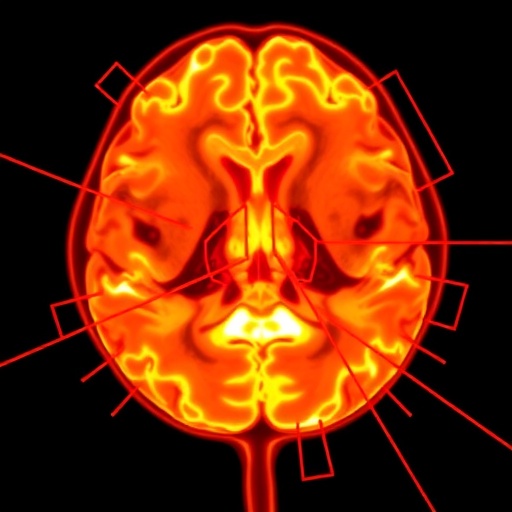Artificial intelligence (AI) is rapidly transforming educational methodologies across various disciplines, and neurosurgery is no exception. At the intersection of AI, virtual reality (VR), and human expertise, researchers are developing innovative approaches to enhance the training and performance of neurosurgeons. A groundbreaking study conducted by The Neuro – Montreal Neurological Institute-Hospital at McGill University sheds light on how the integration of AI with human instructors creates a superior learning environment for surgical trainees. Their findings reveal that while AI-alone tutoring is effective, the combination of AI data with the nuanced guidance of expert teachers produces the best training outcomes.
The Neurosurgical Simulation and Artificial Intelligence Learning Centre at The Neuro pioneers this technology by simulating brain surgeries within immersive VR environments. These simulations are not mere visual aids but sophisticated platforms that allow trainees to practice complex neurosurgical procedures interactively. Embedded within the simulation is an AI system capable of analyzing trainee performance metrics in real time. The AI tracks parameters such as precision of instrument movements, timing, error rates, and risk management techniques. This granular data collection enables continuous, objective assessment of surgical skill progression, which has traditionally relied heavily on subjective instructor evaluation.
Previous research from this centre demonstrated the potential of an AI-driven intelligent tutoring system to outperform human instructors when delivering verbal feedback. However, that earlier study did not supply instructors with access to the AI-generated performance data. Recognizing this limitation, the recent investigation sought to understand whether expert instructors informed by AI data could further enhance the learning experience by providing tailored, real-time guidance. This approach merges the strengths of machine analytics with human perceptive judgment, aiming to optimize surgical education.
To explore this, researchers recruited 87 medical students from four medical schools across Quebec. These participants were randomized into three distinct training cohorts. The first group received verbal feedback generated solely by the AI tutor following each simulated procedure. The second group was coached by expert neurosurgical instructors who provided traditional verbal feedback based on their observations. The third and pivotal group benefited from expert instructors who supplemented their feedback with dynamic AI performance data, enabling them to customize instruction in accordance with the trainee’s precise strengths and weaknesses.
The study meticulously recorded and analyzed multiple performance variables, including the speed and accuracy of surgical skill acquisition, the ability to transfer learned skills to new scenarios, and critical safety measures such as management of intraoperative bleeding and avoidance of tissue injury. These metrics are fundamental to evaluating true surgical competence, as brain surgery demands flawless precision in high-stress environments where errors can have catastrophic consequences.
Results showed that trainees receiving AI-augmented human instruction demonstrated significantly superior surgical performance compared to the other groups. Notably, this hybrid training model not only accelerated skill acquisition but also enhanced skill retention and transfer, meaning students were better able to apply what they learned to novel surgical challenges. Moreover, this group exhibited markedly improved risk management behaviors, effectively minimizing potential intraoperative complications like hemorrhage or unintended damage to brain tissue, two paramount concerns in neurosurgery.
These findings underscore a vital principle in the future of medical education: while AI brings unprecedented analytical capabilities and objective performance assessments, it cannot fully substitute the adaptive judgment and mentorship of human instructors. The integration of intelligent systems provides detailed quantitative insights that empower educators to tailor feedback intelligently, fostering deeper engagement and more meaningful learning experiences for their trainees.
Lead author Bianca Giglio highlighted the transformative potential of this synergistic model. She emphasized that “when experienced instructors utilize AI-derived real-time data, feedback becomes more personalized and contextually relevant, accelerating trainee learning curves and ensuring safer surgical practices.” This human-AI partnership represents a paradigm shift away from AI as a replacement tool toward AI as an augmentation that empowers educators.
Although this research focused explicitly on neurosurgical training, its implications extend far beyond the operating room. Any discipline requiring acquisition of complex technical skills under pressure—such as aerospace engineering, emergency medicine, or advanced manufacturing—may benefit from comparable educational frameworks that combine artificial intelligence with expert human coaching.
Senior author Dr. Rolando Del Maestro, director of the simulation centre and a neurosurgeon himself, envisages a future “Intelligent Operating Room” where AI systems constantly assess procedural performance in real time, providing actionable insights. Such environments would minimize human errors during surgeries while simultaneously serving as dynamic training grounds for surgeons. This vision of merging machine intelligence with human expertise promises safer, more effective care and accelerated development of surgical proficiency worldwide.
The study, published in JAMA Surgery on August 6, 2025, was supported by a consortium of prestigious organizations including the Brain Tumour Foundation of Canada and the Royal College of Physicians and Surgeons of Canada. Funding also came from various foundations and scholarships dedicated to advancing neuroscience and surgical education innovation.
The Neuro – Montreal Neurological Institute-Hospital, founded by Dr. Wilder Penfield in 1934, remains at the forefront of neurological research and clinical excellence. By integrating cutting-edge AI and VR technologies into its educational programs, it continues its tradition of pioneering breakthroughs that not only deepen understanding of brain disorders but also enhance the training of the next generation of expert surgeons.
This study represents a milestone in the evolution of surgical education, illustrating how the harmonious blending of human and artificial intelligence can unlock new potentials in skill mastery and patient safety. As medical training increasingly embraces these advancements, the future of neurosurgery promises to be more precise, efficient, and responsive to the complexities of human anatomy and pathology.
Subject of Research: People
Article Title: Artificial intelligence augmented human instruction and surgical simulation performance
News Publication Date: 6-Aug-2025
Image Credits: The Neuro (Montreal Neurological Institute-Hospital)
Keywords: Artificial intelligence, Education technology, Neurosurgery




